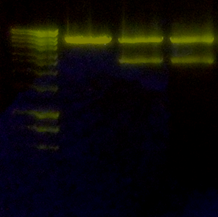Cardiac excitation-contraction (EC) coupling, a process which governs contractility of the heart, depends on the controlled release of calcium ions (Ca2+) from the sarcoplasmic reticulum (SR) through specialised Ca2+-release channels called type-2 ryanodine receptors (RyR2). RyR2 plays a pivotal role as the main pathway for the release of Ca2+, driving cellular contraction. Consequently, dysfunction in the release of Ca2+ through these channels and the modulatory influences which control RyR2 function have been identified as contributory to the pathophysiology of heart failure and fatal cardiac arrhythmias.
Very recently a link between elevated levels of intracellular zinc and heart disease has been highlighted, but very little is understood regarding the role of zinc in the heart. In this latest publication in The Journal of Biological Chemistry the Pitt group show that Zn2+ is a high affinity regulator of RyR2 displaying three modes of operation. Picomolar free Zn2+ concentrations potentiate RyR2 responses but channel activation is still dependent on the presence of cytosolic Ca2+. At concentrations of free Zn2+ >1 nM, Zn2+ is the main activating ligand and the dependency on Ca2+ is removed. Zn2+ is therefore a higher affinity activator of RyR2 than Ca2+. This work suggest that RyR2-mediated Ca2+-homeostasis is intimately related to intracellular Zn2+ levels providing a mechanistic explanation linking altered Zn2+ homeostasis to cardiac RyR2 function.The data presented represents a shift in our understanding of how RyR2 is activated during EC coupling and indicates that channel dysregulation, through aberrant Zn2+ homeostasis, is likely to play a fundamental role in the generation of heart failure and other arrhythmic diseases. Full text is available online.




